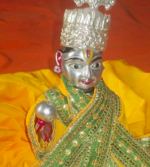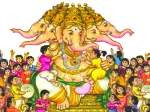
 India and Tibet are intricately tied to each other, especially in cultural and spiritual terms. – Sanbeer Singh Ranhotra
India and Tibet are intricately tied to each other, especially in cultural and spiritual terms. – Sanbeer Singh Ranhotra
India seems to have begun the march for liberating Tibet. A former high-ranking official belonging to the Indian Foreign Service, who has also served as an ambassador to China, has decided to poke the paper dragon real hard. Nirupama Rao, India’s former ambassador to China has called on the Indian government to push for a diplomatic solution to the occupation of Tibet by China. Speaking for a series called “International Campaign for Tibet Talks’, Rao emphasised that countries like India and the US should look at policy options that ensure the best outcomes for the Tibetan people.
The former ambassador was quoted as saying, “I think that India can do a little more in being an advocate for negotiations and for discussions and for conversations between the Tibetan community in exile and the Chinese.”
Taking a swing at Jawaharlal Nehru, Nirupama Rao also said, “I believe our policymakers at that time in our history perhaps didn’t have—and I guess it’s easy for us to say that with the hindsight that we have today—but they weren’t able to look far ahead into the future and anticipate that the whole question of Tibet’s status and the rights and privileges that India under the British had enjoyed in Tibet were being literally given away to the Chinese.”
The former ambassador also mentioned how India and Tibet are intricately tied to each other, especially in cultural and spiritual terms. She said, “We’ve always regarded Tibet as that sacred geography that is in so many ways connected to India. A place of pilgrimage, a place of religious and spiritual inspiration for many of us who go to the Himalayas and who cross over into places in Tibet, which are sacred to our faith.”
Tibet and India
It was in 1950 that the newly established Peoples Republic of China (PRC) launched an invasion of Tibet, which until then, was a free and sovereign region with a unique culture that bears little to no resemblance to that of China. The Chinese armed forces marched across Tibet until early 1951 and established Chinese control over the region subsequently. Back then, scores of Tibetans, including the topmost leader of the Tibetan Buddhist order—the Dalai Lama had fled to India seeking refuge. India provided a safe shelter to Tibetan refugees, and today, the community is thriving in the country and has even set up a Tibetan government in exile at Dharamshala.
For several centuries now, India and Tibet have inextricably been tied to each other—and China has always envied the bond that these two great civilisations share. Buddhism—which originated in India was quick to sweep all across Tibet. Tibetans have a sense of respect for Indian culture, which is from where their faith originated.
India’s ‘Tibetology’ course for its soldiers
The Indian Army is now giving special training to soldiers and officers to help them win over the hearts of Tibetans and nullify whatever little influence China has in the occupied region. Soldiers and officers serving along the LAC are being given special training, under which they are learning all about Tibet. The course called ‘Tibetology’ encompasses training in culture, language, and history along with the Buddhist philosophy followed in Tibet. The Tibetology course is aimed at making soldiers efficient in handling intelligence operations in Tibet, ultimately leading to better strategies for India.
The course is biennial in nature and will train Indian defence personnel through movies, literature, and book reviews. Additionally, they will also be visiting monasteries and villages to have an on-the-ground understanding of Tibet. The course will also include lamas (Tibetan spiritual gurus) imparting their knowledge to the Indian Army.
India upping the ante
The signs are clear—India is upping the ante against China. Late last year, an event in Delhi had unnerved China and led Beijing straight to a meltdown of epic proportions. On December 22 last year, for the first time ever, Indian members of parliament, including a union minister, held a meeting with the Tibetan government-in-exile.
As per government guidelines previously made citing bilateral ties with China, Indian officials, ministers and diplomats are barred from attending events hosted by Tibetans in India.
So, India is effectuating a tectonic shift when it comes to its dealings with China. Now, India has begun representing Tibet. The PLA is known to commit the most horrifying of atrocities and human rights violations against Tibetans. India is emerging as the biggest proponent of a free Tibet. Still, New Delhi must do a lot more to actually help in the liberation of Tibet. – TFI Media, 28 May 2022
› Sanbeer Singh Ranhotra is a political commentator and journalist.
Filed under: china, india, tibet | Tagged: chinese repression of tibetans, india-china border dispute, indian-tibetan relations, tibetan government in exile, tibetan nationalism |


























